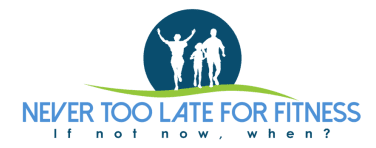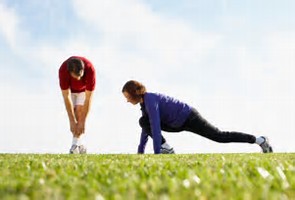Flexibility training is an overlooked and underrated forms of exercise. I know it has been lacking in my training for years. My wife says, ” I make the Tin Man look like Michael Jackson!” Regaining my flexibility is now a priority for me. The goal of flexibility training is to increase your range of motion for your major muscle groups.
Flexibility training delivers the following benefits:
- Increased mobility
- Improved balance
- Decreased aches and stiffness
- Improved sports performance
- Reduction in injuries
- Increased energy
There are many ways to increase your flexibility and train your core including Yoga, Pilates and basic stretching. You can achieve significant benefits with just five minutes a day.
Ten Tips for Stretching
Use the tips below to get the most out of your stretching program.
- Never stretch cold. Muscles stretch better when they are warm and have ample blood flowing through them. Start with a short 5-10 minute warm up before stretching. Try walking, treadmill, elliptical, etc. and go long enough to break a sweat.
- Don’t rush through your routine. Take time to work all the target muscle groups.
- Hold each stretch for 5-30 seconds depending on stretch and your flexibility.
- Don’t bounce. Doing so can cause small tears and harm to a muscle.
- Move slowly and gradually to obtain the optimal stretch. Allow the muscle to stretch rather than forcing it.
- Stretch antagonistic muscles first then the target muscle. For example, stretch your bicep before the triceps or your quads before your hamstrings.
- Breathing while stretching should be slow and relaxed. Exhale while you’re doing the stretch and inhale while returning to the original position. Breathing promotes blood flow and increases oxygen and nutrients to the muscle.
- Repeat tight muscles. If a muscle feels tight spend more time on it.
- Start with your lower back because it is involved in almost all stretching exercises.
- Remember to stretch after exercising. Your muscles are full of blood and you’re warm so this is a great time to add to your flexibility.
There is no evidence that loss of flexibility is directly related to aging. The harsh reality is that lack of flexibility is mostly due to diminished physical activity. Fortunately, flexibility can be improved at any age. The key is using static stretching and range of motion exercises that promote the elasticity of the soft tissue.
Flexibility Training Guidelines
For maximum benefit flexibility training should be done at the end of an exercise program when tissues are warm and suppler. Incorporating 5-15 minutes of stretching two to three times a week should be your goal.
Many people participate in Yoga, Pilates and similar classes that promote flexibility and increasing one’s range of motion. If you choose this route, be sure to select a class that is appropriate to your fitness level, flexibility and knowledge of the exercises in the class.
Still others prefer to do stretching as an isolated activity. If this is the case be sure that you perform an adequate warm up before stretching.
If you sit during the day, it is also a good idea to do a few minutes of stretching every 60-90 minutes.
To maintain your mobility, balance and functional longeveity, make flexibility training a part of you daily routine and exercise program.

